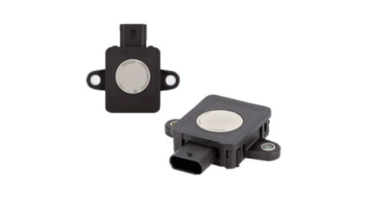What the Manufacturer Recommends
Nobody knows more about a bitcoin miner than the company that made it. So when it comes to mining through the cold, there’s nobody better to consult than the manufacturer. Bitmain gives us some recommendations for conditions miners should work in, namely the environmental conditions. Based on the table below, miners should not operate in ambient temperatures below 0°C.
.png)
In fact, and quote, “The recommended ambient temperature should be about 15° to 30° Celsius.”
The hardware that is too cold for normal operation is at risk of physical damage. This usually happens while machines are restarted (for example due to an upgrade or setting change) or turned off for some time and then booted up again (curtailment, power trips, etc.).
What Braiins Recommends
Still, Braiins knows a lot about getting more from a bitcoin miner than what the manufacturer says. Just download Braiins OS and see for yourself. We are experts when it comes to ASIC temperature management. From our experience, rapid temperature changes are the main concern here. It is best not to let your machines cool down below 0°C no matter what. If it must be done, it is better to do it slowly. Here is a list of tips to keep in mind as the temperature drops:
- Prepare the facility by insolating the building, mining container or even the miners themselves.
- Try to limit the amount of cold air that flows into the space where the machines are. For example, close the lids on the side of the container until miners are hashing and warm.
Use hot air feedback if your containers have that option. You can open the door just a little while closing all cold air intake to simulate this. Blocking the cold air intake should be done just for a short period of time to let the machines warm themselves. Be very careful with this option, as miners can start to overheat fast, and remember to monitor chip or PCB temperatures constantly.

- If there are any external fans that push cold air into the space with the machines, slow them down or stop them completely.
- Use finer dust filters – they will slow down the air intake. Since winters are less dusty, you should not have issues with maintenance.
- If you use the chimney effect for faster cooling, it will work against you when trying to keep the miners warm. Dismantle it or try to minimize its effects by physically disrupting the airflow until machines warm up.
- You can also use a good old-fashioned space heater to warm up both the space and the miners.

Tips if You Need to Reboot Hashing Miners
At large bitcoin mining facilities, you’ll often need to reboot miners that are currently hashing. You may need to do this for a variety of reasons. Depending on how well done the insolation in the facility is, this doesn’t have to be a challenge. However, you can still follow basic recommendations from the manufacturer.
- Try to schedule this task to be done during the time of the day when the temperatures are the highest.
- Do it gradually, for example – one rack at a time instead of all miners in a facility or container at the same time.
- Start with higher shelves while keeping the bottom ones running, the heat produced by miners on the lower shelves should prevent the other ones from getting too cold.
Tips for Booting Miners That Were Offline for Some Time
Bitcoin miners that participate in things like demand response may have miners that were off for long periods of time. Or, they simply may have miners that have not run in a while. For optimal temperature management, use the general recommendations from the list above to warm miners up and monitor ambient temperatures inside the facility. Physically check on your machines if that is possible, remember it is NOT recommended to boot them up if the boards are below 0°C. Such actions may and often do result in hardware failure.
Aside from controlling the ambient temperature, there are some settings you can try with Braiins OS to gently start the equipment again and monitor the process.
There is a pre-heat feature in our firmware, it has a 10 minute cap, and if the process times out, miners will still try and boot up. If the device is still cold after pre-heat, fans will not turn on to prevent further cooling down during the boot. During the pre-heat, firmware waits until the chip temperature is at least the Target temperature minus one degree.If your devices started hashing, check the metrics in the dashboard. If fans are under 20% and the chip temperature is below the target temperature set, it can indicate that the miner is unable to reach the target temperature even on low RPMs, and you should consider warming the miners more. In the screenshot, there is an example where you can see fans are at only 13% with the temperature still not at the target (default is 60 °C for this model).
.png)
- Consider disabling the Dynamic Performance Scaling (DPS) so the machines start to boot at the target power profile. With DPS on, they start at lower power (close to 66% of the set Power Target) and gradually increase the power till the machine reaches the Power Target. Remember that DPS is more useful during hot months and is designed to prevent overheating. There is a trade-off here though. With DPS off, the firmware will not try to scale the miner down in case of overheating, but there is still a failsafe that will pause the miner when the Dangerous Temperature is reached.
- In case you often experience connectivity issues, the first thing to do is to add as many fallback URLs as possible. There is no limitation for the number of those — you can find all available Braiins Pool URLs here. Additionally, setting up a “drain” pool may be a way to keep miners from rapidly cooling down to ambient temperature during the time the connection is lost. The logic is that you keep an alive pool URL in your setup at all times and miners do not stop to hash right away when the internet is lost and therefore stay warm longer. Of course, this has a pricey downside — miners will continue to consume electricity while sending their hashrate to the drain, essentially a void. To use this solution, just add “drain://x” as your pool URL, username and password are not important in this case as the miner is not actually connecting to any pool. Remember that for this to work properly you need to keep the drain as the very last option.


There is no perfect way to manage cold temperatures, but still, you can set yourself up to be as prepared as possible when the weather gets colder. With all the constantly moving variables in bitcoin mining, it’s important to know what is coming and remain flexible, so you can tackle any issues that arise. Stay warm, miners!
Join our firmware Telegram groups:
EN, RU, ES





